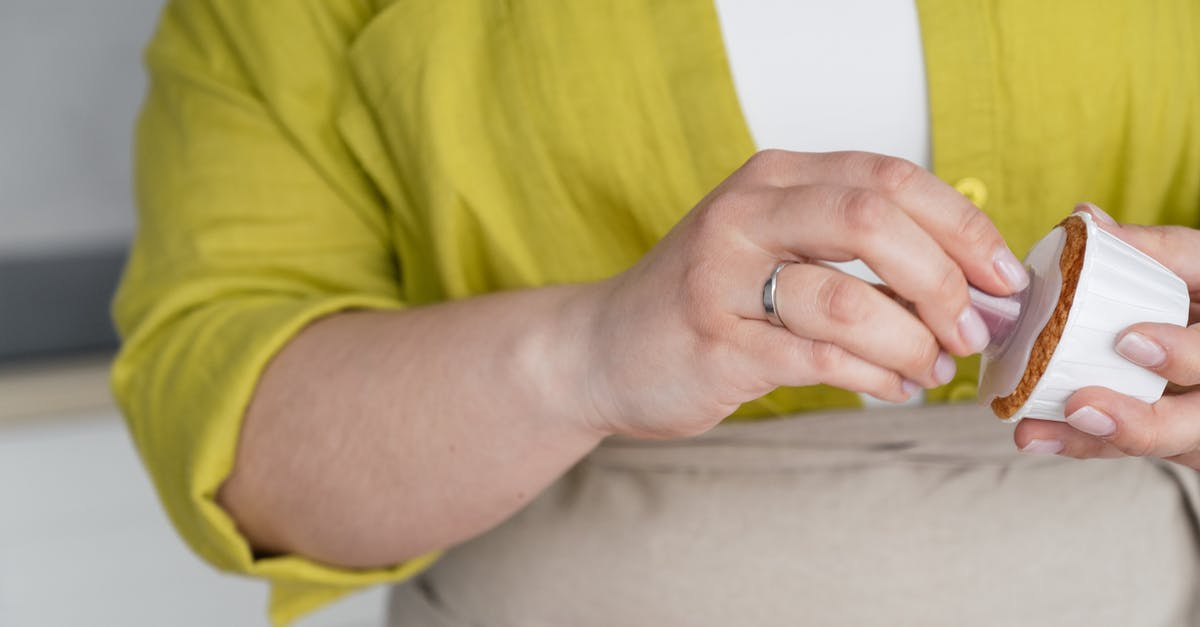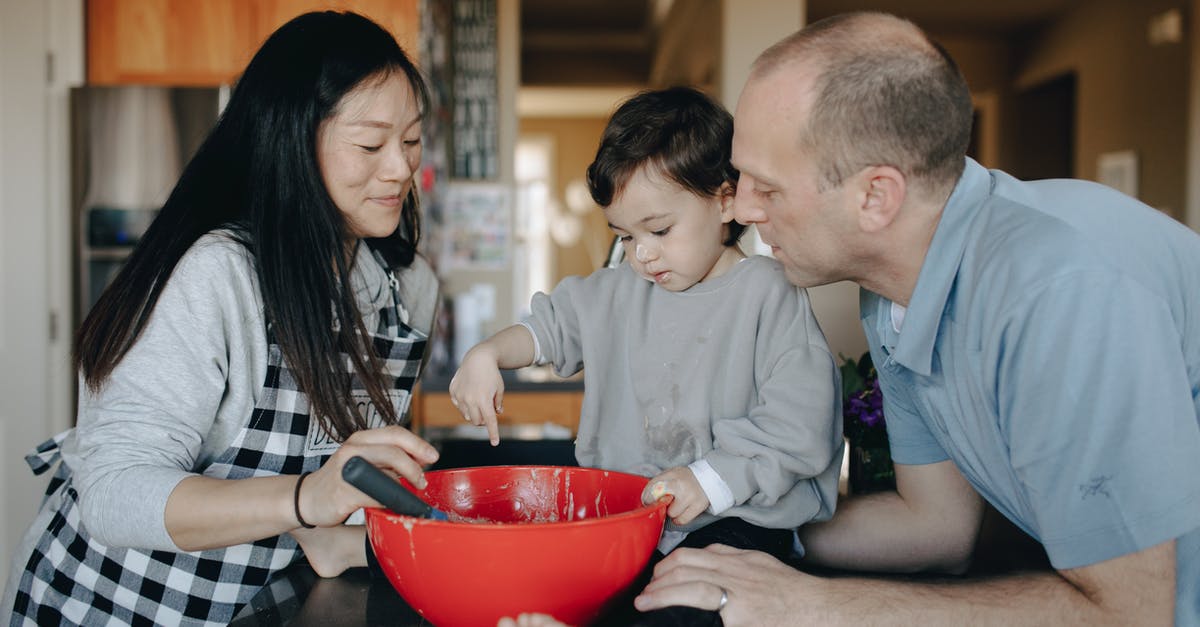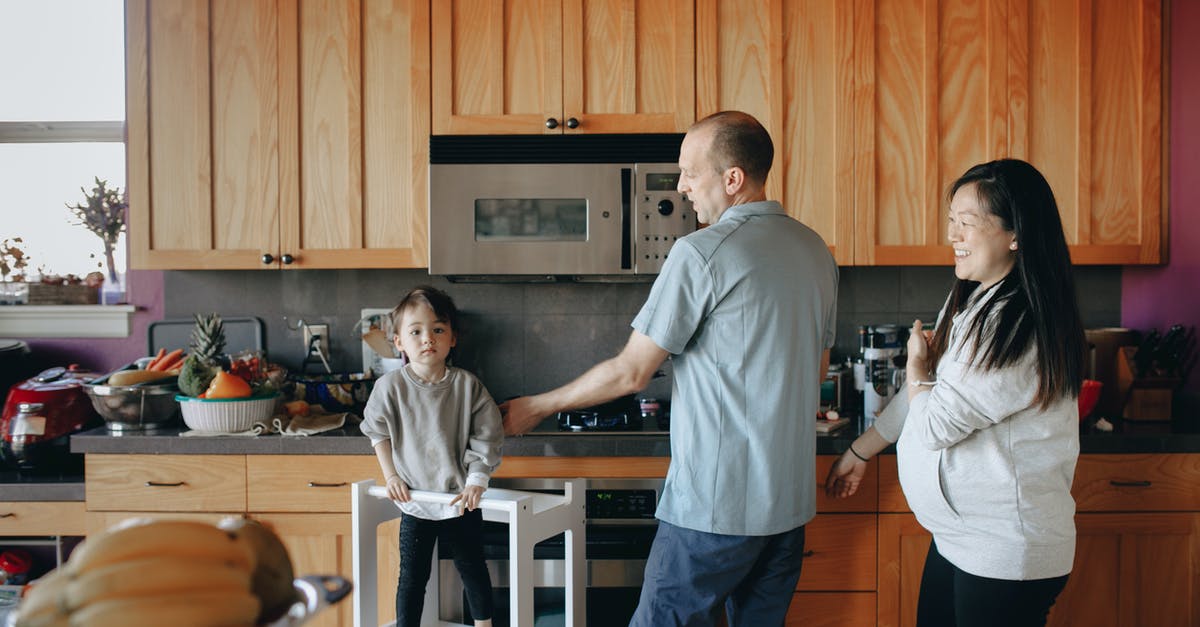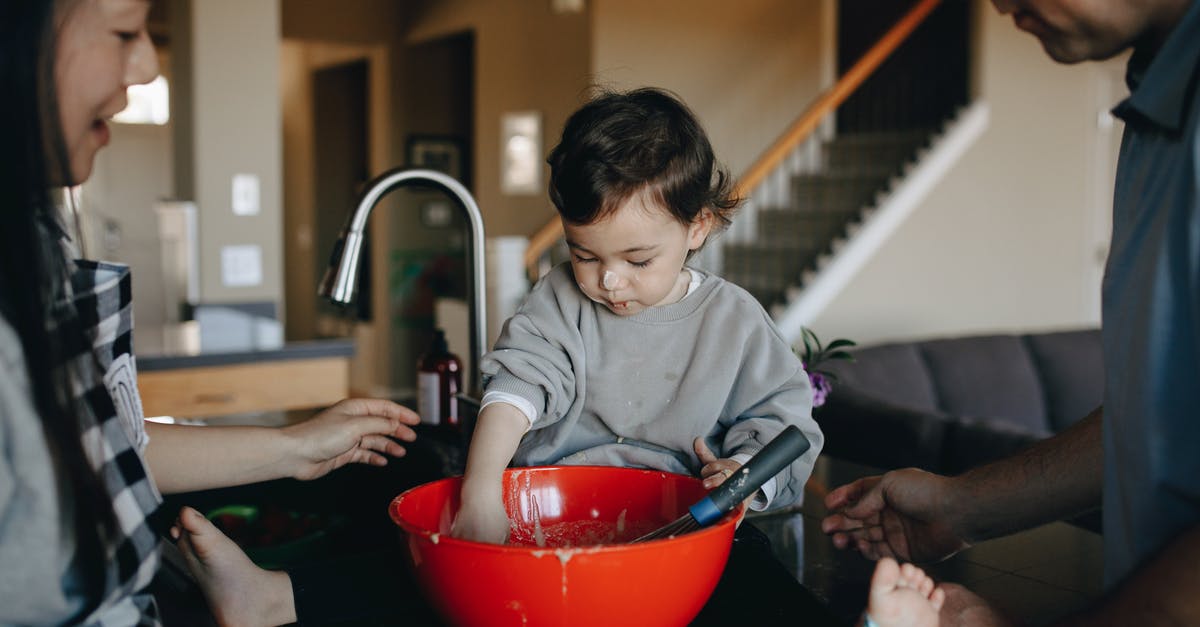Ways to make my cooking routine more efficient?

I enjoy cooking. In an ideal world, I'd spend some time messing around in the kitchen four or five nights a week. But as it stands, I'm very busy, on a very tight budget, and trying to keep up with my body's high caloric demands so I can put on some muscle.
In an effort to address these issues, I've been cooking in bulk for about a year. I set aside Sunday to do my grocery shopping and cooking, and just reheat things as needed throughout the week. Not only am I dissatisfied with the results, but I am consistently frustrated with how long things take. This week's batch cooking really stood out to me in that regard.
Cooking three large servings (1500 kcal each) of chicken fried rice took 2 hours, excluding prep for the marinade (15 minutes) and marinating time (1.5 hours). An orange ginger pork stir fry (no orange sauce, just an orange ginger marinade) took me 45 minutes to prep the marinade and vegetables, and another 30 minutes or so of cook time, just for the flavors to be weak and the texture unpleasant.
It seems I spend far too much time cleaning my cast iron pans; I've yet to cook a meal on them where something hasn't been burnt on pretty seriously and required multiple passes with salt and/or fat of some sort to get off. Today, I had to resort to the water-boiling method to get some gunk off, reseasoned both pans with a thorough coating of coconut oil and still had to take 10 to 15 minutes muscling through crud on my pans between each serving of fried rice, and to add insult to injury, I'm looking at one pan and seeing some sort of white coloration on it that I'm pretty sure isn't supposed to be there.
So, with that being said, is there anything about what I've described that suggests some clear, correctable problem? Please, no suggestions that involve 'buy this thing.' I'm on such a tight budget that let's just assume that's not an option. I have to learn to work with what I have more efficiently.
I have:
- a 3 Qt. cast iron Dutch oven
- a 10" cast iron skillet (serves as the lid on the Dutch oven)
- a 2.5 Qt. stainless steel sauce pan
- a 1.5 Qt. stainless steel sauce pan
- a 1 Qt. stainless steel sauce pan
- a 17.25" x 11.5" cookie sheet
- an 8 Cup Rice Cooker
- 2 4-Qt. tupperware containers
- 2 2-Qt. tupperware containers
- 4 1-Qt. tupperware containers
My weekly food budget is $40, and I'm trying to get ~3000+ calories 3 days a week and ~2400 calories otherwise. I'm going for paleo compliance as far as I can--I permit myself the use of rice because it's cheap, has relatively low phytic acid content, and helps answer my high caloric needs. But other grains are a no-no.
Best Answer
I see a few issues with what you've described:
It sounds to me like a significant portion of your time 'cooking' is actually cleaning. This might mean that you're not letting the pan heat up significantly, or that you're not using enough oil. (yes, we're trying to be healthy, but it is fried rice).
By cooking in bulk, you're likely over crowding your pan. This would dramatically affect the texture of the final result. (see BaffledCook's reply)
The crud that you're scraping off is likely fond, the brown bits that stick to the pan and caramelize. What you want to do is try to deglaze between batches with some liquid (ideally, whatever you'd be using in the sauce, but without any cornstarch), but keep the now dark brown liquid to make your sauce. If you don't save these bits, then you're dumping the flavor down the drain.
I suspect that you're making the rice and using it in the same day -- this will result in more sticking. You're actually better off making the rice a day ahead, spreading it out to cook, then putting it in a container to place in the fridge.
Personally, to speed up my fried rice, I actually make Nasi Goereng -- while the pan is heating up, chop up an onion and whatever other veg, then make an omelette or two in the hot pan (set aside, then cut into ribbons), cook the veg, add the cold, cooked rice + your spices (I often just use madras curry powder + soy sauce, mix in the egg ribbons.
Pictures about "Ways to make my cooking routine more efficient?"



Quick Answer about "Ways to make my cooking routine more efficient?"
How can we make cooking more efficient?
10 Tips to Help You Cook FasterHow can you make actual cooking easier and faster?
Here are 8 ways to make cooking easier and faster than takeout:How to Cook Faster and Clean Up Less
More answers regarding ways to make my cooking routine more efficient?
Answer 2
Consider expanding your repertoire of meals to those designed to cook for a long time without attention, and to cook in large batches. You seem to be taking things that are supposed to cook "a la minute" and cooking 3-5 times as much, which as you've seen doesn't work out well.
If you have an oven, roast chicken (or other meat) and a cookie tray full of roasted vegetables will take an hour. If the chicken is very large and needs two hours, start it first and then put the vegetables in later. You might turn the vegetables once while they're in the oven. I find these taste amazing with very little added ingredients, but lemon or garlic in the chicken, or a little salt and rosemary tossed with the vegetables, can take it up to sublime. You can roast any root vegetable (potato, onion, rutabaga, small whole beets, carrot) and (for shorter times) broccoli, cauliflower, green beans, asparagus, you name it!
If you have a large enough pot (I use a cast iron one) then a stew, curry, or braised meat can be made in large batches. Brown the meat (perhaps half first, then take it out and brown the rest) and some onions, add spices, water, simmer it all together for an hour to soften the meat, or for tough beef maybe three hours, then add vegetables that cook in the liquid. If you like, make dumplings that cook on top of the liquid. On the day serve with rice, pasta, etc. You can also do this with Italian meat-and-tomato sauce.
Most peasant food tastes amazingly good and needs hours of unattended cooking. Find some recipes that fit your tastes and use these techniques, and your cooking will be way more efficient.
Answer 3
A cheap and simple way of improving the quality of your storage method is to buy ziplock bags. You should store each individual serving in separate bags and press out the air as best as you can. These bags can be frozen, so that will give you longer storage times. They can also be reused, so it's not expensive. (A more expensive solution would be to buy a sous-vide machine for around 100€)
You should consider marinating longer. You could buy on Sunday, freeze for a week and marinate on Saturday.
Your food sticks to your pans because your not heating them sufficiently. Get a cup of water and a teaspoon. While you heat your pan, splash a drop of water on it. Wait until you see a 'mercury ball' forming. That's when your pan has become non-stick. If the pan forms multiple balls, your pan is too hot. [This works for stainless steel, I hope it works similarly on iron]
If you fry your rice in a hot pan, and you add a liquid, the rice will stick to the bottom. Solution: fry separately and keep it warm in another pan on a low flame.
When frying (sauté) meat, start with the high heat to brown it (for flavour), then take it out and fry some vegetables at the same high heat. Add cold water, add your meat, bring down the temperature and stick a thermometer in the meat until it's done.
Try to be consistent; write down your method, check the results, write down a tweak, check the results...
Let us know how that works out!
Answer 4
As the other answer was more about your specific example of fried rice & stir fry, I'll offer a completely different answer on 'cooking more efficiently', more in the lines w/ what Kate mentioned, but a few recommendations:
Compare your speed in processing things to TV chefs (that actually do cooking, not just substitute pans out every couple of minutes). If you take 2x as long as them, that's not so bad. If you're taking 5-10x as long for a given step, that's something you probably either need to practice & improve on, or stop doing those steps. Even small things like how long it takes you to dig up all of the proper ingredients can drag out the cooking time significantly.
How finely you cut things up matters. Taking a minute or two to chop things finer might save multiple minutes when cooking. (and dramatically affects the outcome in terms of flavor & texture). Having a sharp knife will significantly affect how long this takes you. (unless you cut yourself, which slows things down).
To save time from cooking every night, if you plan your meals well, you can intentially cook too much food one night to give you a head-start towards the next night's meals.
For example:
- London broil
- Fajitas
- Stuffed bell peppers.
You cook the steak the first night, the second night you reheat the leftover steak in an appropriate marinade (I use a mix of italian dressing + lime juice) and cook some onions & peppers. The third night you stuff the leftovers into a bell pepper & bake.
London broil also turns into a good stir fry or a beef stroganoff. Meatloaf becomes meatloaf sandwiches, sloppy joes, the basis for a meat sauce over pasta, or a casserole. Roast chicken becomes a chicken pot pie, chicken ala king or chicken fried rice. Ham becomes ham & bean soup, ham & cheese casserole, or a pasta salad. etc.
Some of the advantages of this technique is that you're in the right mental state for what you're going to be cooking, so you don't waste the time the next night with the 'what am I going to cook tonight?' and 'do I have the right ingredients?' game.
Answer 5
It sounds like part of the problem is you're putting a very high standard on your cooking, since you're working hard to prep and use marinades. Normally this is a really good thing and is often the difference between "good food" and "great food". At the same time, though, it takes much more time. Worth it if you're hosting a dinner, but not so much when you just need to get some food made. You can work much faster if you're willing to sacrifice some quality, and even then the food usually comes out good. Some ways of doing that:
- Telescope everything. This is the big one. Instead of prepping and then cooking, prep while you cook. Fry the meat and veggies while waiting for the rice to finish. Chop the pork after you've added the onions. It can throw the timing off, so some things will be a little over or underdone, but with after a couple of times it gets easy to hit "good enough" and you can finish a pasta sauce before the water starts boiling.
- Instead of marinading, prep a sauce while everything's cooking and add it at the end. Let everything simmer in it for a little bit, and you get some of the benefits of marinading without the timescales needed.
- Use the rest of your kitchen. This is not so much "doing things faster" as "doing more things in the same time." Assuming you can only watch one pan at a time, that still leaves (in a normal kitchen) three burners for simmering and steaming things, an oven for baking and roasting, and a countertop for prepping cold foods. Water stuff and oven stuff don't require much attention so you won't hurt them by multitasking.
A couple of other things you might want to play with: if you're working with things that freeze well, prepare more than you can eat in a week. I usually bake breadrolls in really large quantities and chuck most of them into the freezer, which means I have to bake less next week (or just fill the freezer more). Also, you might want to experiment a little with your knifework. If you can speed up your chopping, you can prepare things faster. Sounds obvious, I know, but it's really surprising just how much time this saves you.
Answer 6
I agree with a lot of what other answers mention.
These tips will help with the cleaning problems:
- Seasoning your cast iron correctly. For example
- Heat your cast iron and stainless steel pans enough before adding food
- Heat up the oil you add to the pan hot enough before adding food. Oil should be shimmering and you should be able to smell the type of oil you put in once it heats up. For example vegetable oil will smell like corn.
- Knowing when your oil is too hot for the food items you are cooking. Once your food is in the pan, it should not be crackling. Turn the burner down if it's cracking and if need be take the pan off the burner for a few seconds to adjust the heat of the pan.
- Knowing your stove top burners and how much heat they put out on different settings. Each burner can/will put out different heat amounts. Know where your high and medium heats are for each burner.
Some other tips:
- Double check your oven temperature reflects the same temperature you set it for using an oven thermometer.
- Don't crowd the pot when searing meats. If marinating, let the excess drip off the meat first before placing the meat in the pot else you are steaming it. Sear meat in batches. If you are cooking other items for the same dish, like vegetables, take out the meat after searing so that it does not cook longer than it has to, cook the other items of the dish and add the meat at the end.
- If you ever get a chance, buy or get someone to gift you an instant read thermometer you can stick into your meat to see when it's done instead of guessing or relying on some recipes' time.
Stir Fry Tips:
- Sear the meat on high heat (do not cook all the way)
- Take the meat out of the pan
- Add vegetables in groups according to how long they will need to cook until they are almost tender crisp
- Add aromatics for about 30 seconds to a minute (garlic, ginger, spices...)
- Add any sauce, including the marinade sauce if you used it for the meat
- Let the sauce cook down a little so it thickens
- Add meat and cook until desired doneness
Fried Rice Tips:
- Make a bunch of rice
- Lay it flat on a cookie sheet on top of tin foil or parchment paper (so you have a better chance of not having to watch the pan)
- Stick it in the oven @200 for 30 minutes or air dry for an hour.
- Now it's ready for whatever recipe you choose
- You can also store it after drying it in the fridge or freezer.
Reheating Tips:
- You can reheat your fried rice (or just about anything else) on a baking sheet (cover the baking sheet in tin foil or parchment paper) in the oven @350 for 20-30 minutes
- Do not heat frozen food up on high heats. If you have the time let them thaw in the refrigerator or in the microwave on one of the defrost setting turning/stirring making sure the food does not have a hot spot where other parts of it are still frozen.
There are a lot of slow cooking meals you can do in large quantities in a stock pot on the stove top. Especially central/south american foods. Chili verde for example. If you have a mexican market with a butcher, you have access to cheap meat cuts that you can cook low and slow. Even chicken is cheaper at our mexican market and fresher than say Foster Farm chicken packages.
You can also prep and freeze a lot of sauces that you can throw in to meals. Curry paste or tomato based sauces for meatballs are some example.
Remember to salt and pepper your food to taste at the very end (most cases).
There are a lot of flavored rice recipes out these besides fried rice.
You can find good deals at garage sales too for bigger pots and pans if you end up needing them.
Try to find the best multi tasking workflow for each meal you make and keep refining it every time. Get your mise en place in order too.
Don't rely on every recipes instructions, use your head and think about what the end product is and how the instructions might need to be changed so the items in the meal don't over cook or get mushy or burnt.
Taste as you go!
If you are going to reheat, think about if you want to fully cook everything on Sunday, maybe under cook it a little until you reheat it.
Sources: Stack Exchange - This article follows the attribution requirements of Stack Exchange and is licensed under CC BY-SA 3.0.
Images: SHVETS production, PNW Production, PNW Production, PNW Production
